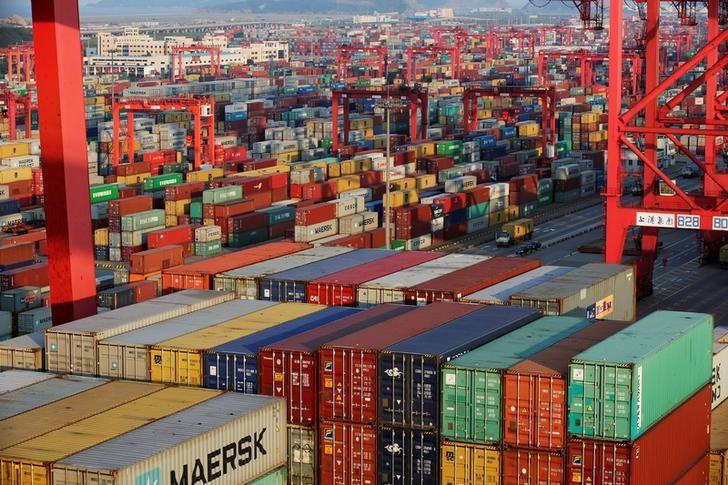
Despite this massive increase in price of the perishable commodity, Pakistan has decided not to import tomatoes from India due to strained bilateral ties. Usually a supply-demand gap of any vegetable in Pakistan is plugged through import from India.
While popular sentiments may be biased against any import from India, we need to ask ourselves whether trade with India can be worthwhile or not? For that matter, we must set aside our security-minded viewpoint of the economy. So let’s talk economics of India-Pakistan trade.
APTMA hails terms of revised export package
Recent trends in Indo-Pak trade
Despite presence of significant trade potential, Indo-Pak trade remains hostage to repeated politicisation on both sides of the border. Both economies have pursued an open trade policy regime with the rest of the world but that openness isn’t reflected when it comes to bilateral trade. Recent chill in the political situation between the two countries has dented prospects for further improvement in bilateral trade. Trade volumes have been decreasing over the last three years.
However, Indo-Pak trade has come a long way since the turn of the century. Official trade volumes have increased from a mere $309.8 million in 2003 to almost $2 billion by 2016. Trade through third countries like UAE, Singapore, & Iran or illegal channels is estimated to be around $2 billion. Bilateral trade has mostly favored India. Pakistan’s trade balance with India has worsened to $1.3 billion in 2016 from $142 million in 2003.
This may not be hard to digest since Pakistan’s trade deficit has increased with almost each of its trading partners because of overall sub-par export performance.
Pakistan’s deteriorating trade balance has also accorded an economic dimension to trade restrictions with India. There are fears among some Pakistani industries that more trade liberalisation with India may hurt their businesses as India is increasingly becoming a trading giant.
Let’s see an example of the cotton industry which is one of the major industries in Pakistan. On the request of cotton spinning industry, the federal government has increased regulatory duty on import of cotton yarn from India in order to protect the local spinning millers. Similarly, other industries are also concerned that better trade relations with India may result in Indian products flooding local Pakistani markets and hence wiping off profit margins.
Despite these concerns, which may seem valid in some business quarters of Pakistan, our economy can actually benefit from trade with India. There are some serious advantages in place for Pakistani economy.
Benefits to Pakistani economy
One may be quick to conclude that if we pursue more trade liberalisation with India, Pakistan’s trade balance with India may worsen still more. This can be true since Pakistan doesn’t export many items which Indian economy imports. Our exports mainly rely on two items which are cotton and rice in which Indian economy has a comparative advantage over us.
On the other hand, Indian economy exports a lot of items which Pakistan imports. Pakistan can import items like tea, sugar, petroleum products, cotton not carded or combed, cyclic hydrocarbons, insecticides, new rubber types, electrical generating sets, electrical apparatus for telephony, motor vehicles, and parts of motor vehicles from India. As of 2016, Pakistan spends almost $6.5 billion on import of these products. The fact that India exports $21 billion worth of these items to the world clearly shows the opportunity available for Indian exports of these items to Pakistan.
If Pakistan imports these products from India instead of other countries, it can save itself a good deal of transport costs. Apart from China, Pakistan’s top import partners include countries like European Union, United Arab Emirates, Saudi Arabia, and United States. Transporting products from these countries cost more than it would if we imported them from India. Transport cost to import one container of goods for Pakistan has increased to more than $1000 during the last few years. Goods from India enter through border on trucks or train which is very cheap. So while our trade deficit with India may increase, our overall trade deficit can reduce due to cheap imports from India.
Export package termed short-term solution
Even Pakistan can increase its exports of products like cement, woven fabrics of silk, wheat, dates, medicaments, polyesters, leather, surgical instruments, and articles of jewelry. India imports $5 billion worth of these products. If Pakistan can tap into the Indian market of these products, it can be a boon for our export performance.
For bilateral trade to flourish, both India and Pakistan should scale down barriers to trade. India operates a very discriminatory trade policy with Pakistan as compare to Pakistan’s. India’s score in trade restrictiveness index developed by the World Bank is higher than Pakistan’s. India should, in particular, reduce stringent non-tariff barriers for Pakistani exports.
More than its economic benefits for the two neighboring countries, trade can be the ultimate guarantor of peace.
The writer is a researcher and works in the development sector of Gilgit
Published in The Express Tribune, November 6th, 2017.
Like Business on Facebook, follow @TribuneBiz on Twitter to stay informed and join in the conversation.

1732530816-0/BeFunky-collage-(88)1732530816-0-165x106.webp)
1720848500-0/Eminem-and-his-daugher-Hallie-(1)1720848500-0-165x106.webp)




1732486769-0/image-(8)1732486769-0-270x192.webp)









COMMENTS (4)
Comments are moderated and generally will be posted if they are on-topic and not abusive.
For more information, please see our Comments FAQ